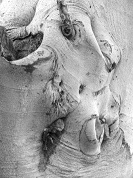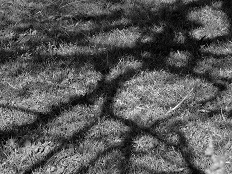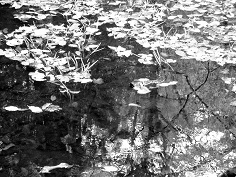Looking and seeing
What does art and culture have to do with cars and lorikeets? Anne Fritz argues that by looking and seeing with purpose we can create art every day.
In order to survive in our busy lives which are crammed full of events, objects and sensations, our brains wisely cut out as irrelevant a large percentage of visual and sound input.
We actually only see a fraction of what is around us – only those bits register which are important and relevant. So my daughter can wave and call to a friend in a passing car which to me, her passenger, was not distinguishable from the rest of the traffic.
Likewise, one sees New Yorkers by the millions striding along the streets of the canyon city without ever looking up at the magnificence of buildings that architects had spent their lives’ work designing, and which tourists flock to see. I in turn lived in Sydney across the street from a great flowering tree and, during the whirlwind of my children’s infancy, never noticed the noisy flock of rainbow lorikeets settling there each night. Yet ever since I took a moment to look and notice, their drunken orgies at blossom time have become a source of great delight.
What does art and culture have to do with cars and lorikeets?
Art of course is something that is so often defined because no definition fits it perfectly. It is an ever changing expression of our culture, and its most important aspect is that it creates a response in the viewer/listener/participant. Clichés do not create emotional responses, art does. In art there is a communication between creator and audience – and regardless of whether the audience responds to the message that the artist intended or to something else, it matters not.
Art is feeling. Art is in the perception of something that gives us an emotional response. And what is special about art is that each of us can create it – we do create it – every day.
How many photographs did you take last week?
Taking a camera and focusing on a small portion of our environment, one can create art to remember; but even without a recording device, just looking is an act of art-making; and looking with purpose can create art, however ephemeral.
Art is not in the photograph: it is in the looking and seeing.
Here are some examples of what I mean: Looking at a tree – up close or just up. Looking down at a shadow or a puddle. Up at the sky.






In New York I had the privilege of running a Masters course for teachers. I got each student to walk their normal route to their corner shop or station, carrying a hand mirror and a camera. The mirror was to show them new and different angles of their environment; the camera was to record anything that they had not noticed on their regular path before. The reports ranged from sunsets over water to carefully framed traffic jams to graffiti on walls next to garbage bins. They were all beautiful, surprising, moving. They had elements of pride, of wonder, of questioning, of newly aroused consciousness; the lives of the students who took the photos and of those who shared their images became richer.
And that is what art is about. Enriching our lives, affirming who we are, our culture.
Because life is not about things; it is about feelings.
Anne Fritz Cohen is a scientist and educator with an international career in these areas, as well as a practising artist working in paints, photography and ceramics. Her qualifications are BSc (Textile Technology) PhD (UNSW) Dip Ed, FTI.













